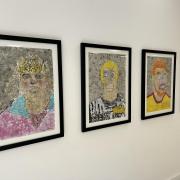The average person walks the equivalent of three times around the earth in their life and it is also estimated that at least 75 per cent of people will experience some form of foot problem. Fortunately, most problems are easy to avoid and simple to treat, as professional podiatrist Sharon Flint of The Foot Centre at Camomile in Ilkeston explains.

Footwear: The vast majority of foot problems are caused by poor-fitting or badly-designed shoes. Wearing shoes that fit properly and support your feet is vital to avoid soreness and prevent or alleviate pain. Always have both feet measured as most people have one foot larger than the other and ensure there is at least 1cm of space at the front of your shoes to allow natural movement.
Corns and Calluses: A callus is a thick, hardened layer of skin which develops when your skin tries to protect itself against friction and pressure. It is very common but can cause considerable discomfort. Hard skin can be eased by the use of an emery-type foot file and a good quality foot cream. Corns, however, are more problematic and you shouldn’t treat them yourself as this can lead to more serious complications.

Aches and Pains: The feet are the foundation of the entire body and a quarter of the body’s bones are in the feet. Back, hip and knee pain may be due to a complication with your feet. A Biomechanical Assessment will assess the way your feet support you when you’re standing and moving. It may be that orthotics will help with some of these issues, but make sure they are the correct ones or they may do more harm than good!
Ingrown toenails: These are caused when the side of the toenail begins to grow into the surrounding skin. They can be very painful and often become infected. In many cases, correct cutting and conservative treatment can rectify an ingrown toenail. However, sometimes the only solution is to have all or part of the nail removed permanently. This is done under local anaesthetic to minimise discomfort.

Diabetes: People with diabetes are at a much greater risk of foot problems. Anyone with diabetes should have regular appointments with a professional podiatrist to help prevent long-term issues.
Verrucae: A verruca is a viral infection and quite contagious. There are many types of treatments available, including the ‘needling procedure’, which is only offered in very few clinics at the moment. An accurate diagnosis is essential before any treatment is started as a lesion on the foot may be something more serious such as a melanoma.

Athlete’s Foot: This is caused by a fungal infection and can be present between the toes or anywhere on the skin. It can also infect the toe nails, causing thickening, brittleness and discoloration. Prompt, persistent treatment is the best way to treat these infections.
If you would like advice on the health of your feet, visit The Foot Centre at Camomile, 63 South St, Ilkeston DE7 5QT or call 0115 932 1349..



























